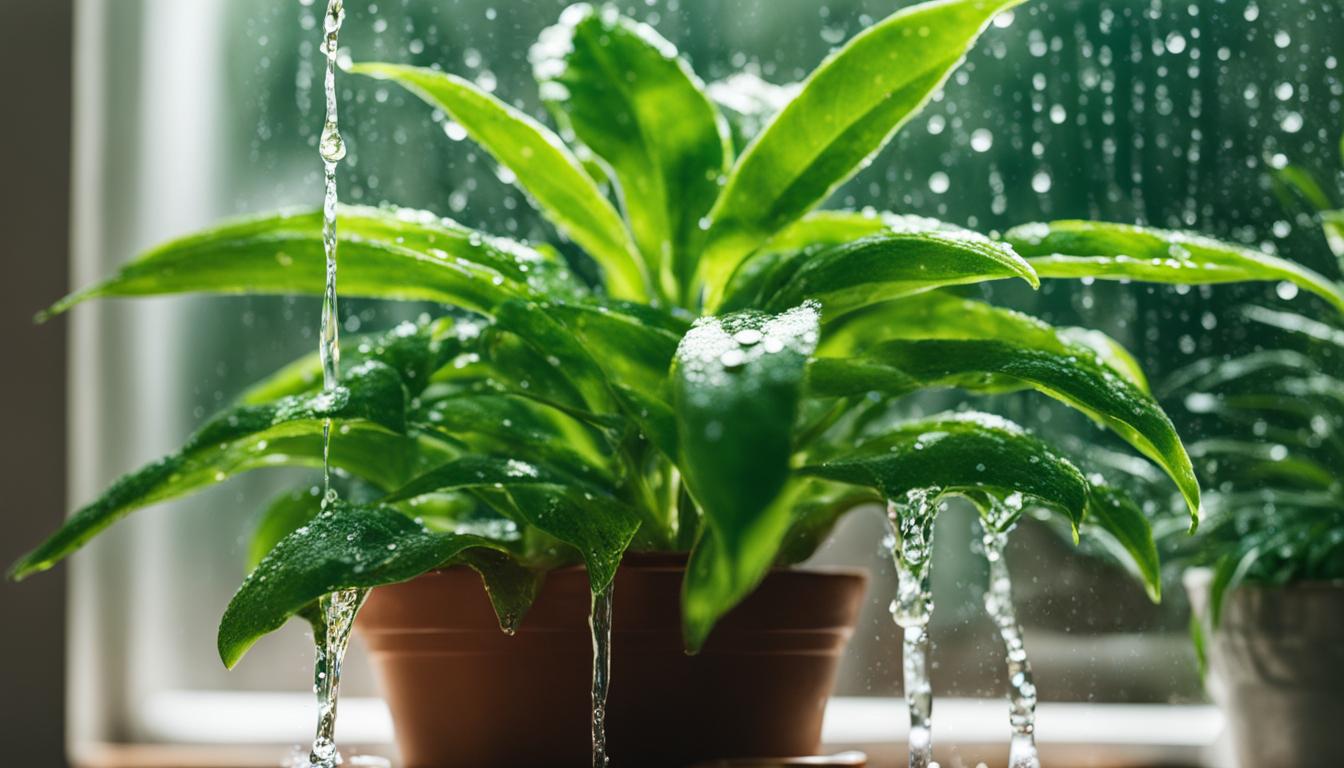
Proper care is essential for the wellbeing of indoor plants, especially when it comes to dealing with various weather conditions.
Factors like light, water, temperature, and humidity play a crucial role in ensuring the health and growth of indoor plants. Neglecting any of these factors can lead to plants suffering.
In this article, I will discuss the best indoor plant care tips for different climates and provide insights into choosing the right plants for your specific weather conditions.
Key Takeaways:
- Proper care is crucial for indoor plants to thrive in different climates.
- Factors like light, water, temperature, and humidity greatly impact plant health.
- Choosing the right plants for your specific climate is essential for their wellbeing.
- Understanding plant care tips can help prevent issues and promote healthy growth.
- By providing adequate care, you can enjoy the beauty of indoor plants in any climate.
Importance of Light for Indoor Plant Care
Adequate light is crucial for the health and growth of indoor plants. Understanding the light requirements of your houseplants is essential to ensure their proper care and development. Insufficient light can have detrimental effects on houseplants, leading to pale, leggy, and weak growth.
Light is a vital source of energy for plants, enabling them to photosynthesize and produce food. Without enough light, plants struggle to carry out this process effectively, resulting in stunted growth and poor overall health. Different houseplants have varying light requirements, with some preferring bright, direct sunlight, while others thrive in low-light conditions.
To meet the light needs of indoor plants, it is important to provide the right amount and intensity of light. Natural sunlight is the best source of light, but in cases where the available natural light is insufficient, artificial lighting can be used as a supplement. Grow lights, specifically designed for indoor plants, can provide the necessary light spectrum for optimal growth.
It is important to note that some houseplants, like poinsettias, require a period of reduced light for dormancy. During this time, they need less light to rest and conserve energy. Understanding the light requirements of your indoor plants and providing them with the appropriate light conditions will help them thrive and flourish.
| Effect of Insufficient Light on Houseplants |
|---|
| Pale and weak growth |
| Leggy and elongated stems |
| Reduced flowering and fruiting |
| Yellowing or browning of leaves |
| Increased susceptibility to pests and diseases |
Watering Tips for Indoor Plants
Proper watering is crucial for maintaining healthy indoor plants. Without adequate water, plants can wither and die, but overwatering can be just as detrimental. Finding the right balance is key to ensuring the longevity of your indoor plants.
One important rule of thumb is to water your houseplants when the soil begins to dry out. This can vary depending on the plant species and environmental conditions, so it’s essential to closely monitor the moisture levels. A simple way to test the soil is by sticking your finger about an inch deep into the potting mix. If it feels dry at that depth, it’s time to water.
However, it’s crucial not to overwater your plants. Overwatering can lead to root rot and other fungal diseases, ultimately causing the plant to decline. To prevent overwatering, make sure the pot has proper drainage holes to allow excess water to escape. Additionally, it’s advisable to water your plants thoroughly but infrequently, allowing the soil to dry out slightly between waterings.
Signs of Overwatering and Underwatering
Knowing the signs of overwatering and underwatering is vital to adjust your watering routine accordingly. Signs of overwatering can include yellowing leaves, wilting, and a foul odor coming from the soil. On the other hand, underwatered plants may have dry, crispy leaves and a visibly wilted appearance.
Another useful practice is to pay attention to the weight of the pot. Lift your plants occasionally to get a sense of how heavy they are when properly watered. This will help you gauge when it’s time for the next watering session.
| Signs of Overwatering | Signs of Underwatering |
|---|---|
| Yellowing leaves | Dry, crispy leaves |
| Wilting | Visibly wilted appearance |
| Foul odor from soil | – |
Remember that different plant species have varying water requirements. Some plants, like succulents and cacti, prefer drier conditions and should be watered sparingly, while others, such as ferns and peace lilies, need consistently moist soil. Researching the specific needs of your houseplants will help you provide the appropriate watering regimen.
Lastly, it is recommended to use lukewarm or room temperature water when watering your indoor plants. Cold water can shock the roots and hinder their ability to absorb nutrients effectively. By following these watering tips, you can ensure the health and vitality of your indoor plants.
Maintaining Temperature for Indoor Plants
Temperature is a crucial factor in maintaining the health and growth of indoor plants. Different houseplants have varying temperature requirements, and it is essential to provide them with the right conditions to thrive.
Indoor climates should be maintained between 60 and 75 degrees Fahrenheit (15-24 degrees Celsius) for optimal plant growth. However, it is important to note that tropical plants prefer warmer environments and may not perform well in temperatures below 55 to 60 degrees Fahrenheit (13-16 degrees Celsius).
Cold drafts and dry air can adversely affect indoor plants, especially during the winter months. To create suitable temperature conditions, it is recommended to avoid placing plants near windows or doors where cold drafts may occur. It is also beneficial to provide adequate ventilation, such as using ceiling fans or opening windows, to maintain a consistent temperature and airflow.
Proper temperature regulation is necessary because extreme cold or hot temperatures can have adverse effects on plant growth. Cold temperatures can cause leaf yellowing, wilting, and stunted growth, while excessive heat can result in leaf curling, scorching, and increased water evaporation.
Therefore, it is crucial to choose houseplants that are compatible with the temperature range of your indoor environment.
Temperature Guidelines for Common Houseplants
| Plant | Temperature Range |
|---|---|
| Ferns | 60-75°F (15-24°C) |
| Peace Lily | 65-85°F (18-29°C) |
| Succulents | 65-80°F (18-27°C) |
| Orchids | 60-75°F (15-24°C) |
By maintaining the appropriate temperature range for your indoor plants, you can promote healthy growth and prevent any potential damage caused by extreme temperatures.
It is also essential to observe your plants closely for any signs of temperature stress and make adjustments accordingly. Remember to consider the specific temperature requirements of each houseplant and create a favorable environment that meets their needs.
Creating the Right Humidity for Indoor Plants
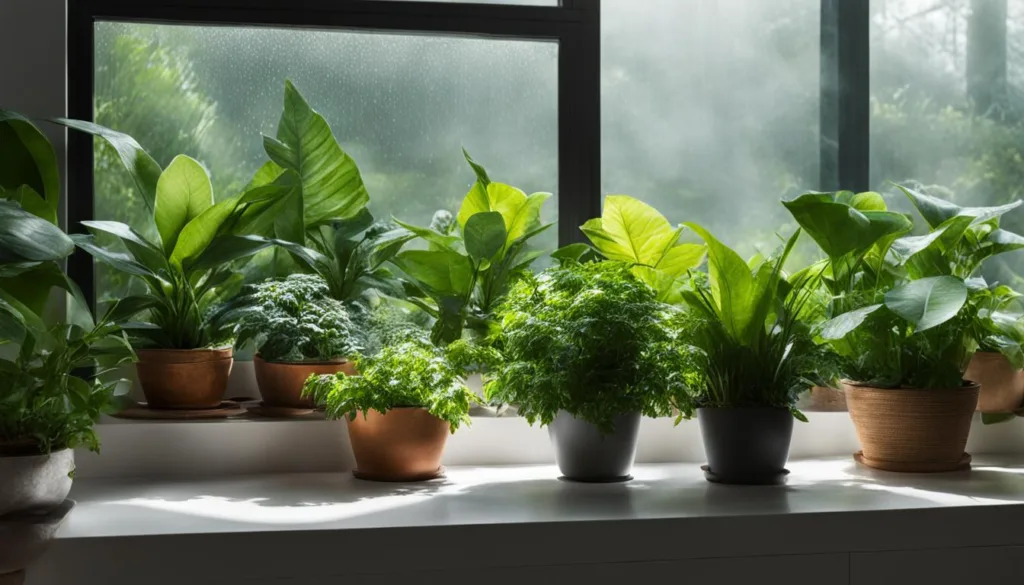
Proper humidity levels are essential for the health and well-being of indoor plants. Most houseplants thrive in humidity levels ranging from 50 to 70 percent, which is higher than the average home environment. Maintaining adequate humidity in your indoor space can be achieved through various methods.
Grouping Plants Together
One effective way to increase humidity for houseplants is by grouping them together. When plants are placed in close proximity to each other, they create a microclimate that helps to retain moisture.
As plants release moisture through transpiration, the surrounding air becomes more humid. This technique is especially beneficial for plants that require higher humidity levels.
Using Terrariums or Trays of Water
Another method to increase humidity is by utilizing terrariums or trays of water. Placing plants in a terrarium, such as a glass container with a lid, helps to create a humid environment.
The enclosed space traps the moisture released by the plants, creating a mini greenhouse effect. Alternatively, you can place trays of water near your plants. As the water evaporates, it raises the humidity levels in the surrounding area.
Misting the Leaves
Misting is a simple and effective way to increase humidity for indoor plants. Using a spray bottle, gently mist the leaves of your plants with room temperature water.
This mimics the natural dew that forms on plants’ leaves in their natural habitats. However, it’s important not to overdo it, as excessive misting can lead to waterlogged soil and potential fungal growth.
Overall, understanding and creating the right humidity levels for your indoor plants is crucial for their overall health and growth. By implementing these methods, you can provide a suitable environment for your plants to thrive.
Choosing Houseplants Based on Light Conditions
The amount of sunlight a home receives is a crucial factor in choosing the right houseplants. Some plants thrive in bright, direct sunlight, while others prefer more shade. It is important to select plants that are suited to the natural light conditions of your home.
For those with low light conditions, there are several houseplants that can thrive with minimal sunlight. The Snake Plant (Sansevieria), Pothos (Epipremnum aureum), and ZZ Plant (Zamioculcas zamiifolia) are all excellent choices. These plants have a high tolerance for low light and can still grow well even in dimly lit rooms.
On the other hand, if your home receives plenty of bright light, you can consider houseplants that thrive in such conditions. The Rubber Plant (Ficus elastica), Spider Plant (Chlorophytum comosum), and Peace Lily (Spathiphyllum) are great options. These plants can handle the intensity of bright light and will flourish with proper care and watering.
| Houseplant | Sunlight Requirements |
|---|---|
| Snake Plant | Low to medium light |
| Pothos | Low to medium light |
| ZZ Plant | Low to medium light |
| Rubber Plant | Bright, indirect light |
| Spider Plant | Bright, indirect light |
| Peace Lily | Bright, indirect light |
It is also important to note that some houseplants can tolerate a range of light intensities. The English Ivy (Hedera helix), Dracaena species, and Philodendron are examples of versatile plants that can adapt to various light conditions. These plants can be placed in areas with both bright and low light, making them flexible options for different rooms in your home.
Choosing houseplants based on light conditions is crucial for their overall health and growth. By understanding the natural light conditions in your home and selecting plants that are suited to those conditions, you can create a thriving indoor garden. Whether you have low light or bright light, there are a variety of houseplants available to suit your needs.
Selecting Houseplants According to Temperature

When choosing indoor plants, it is important to consider the temperature range of your home. Different houseplants have varying temperature requirements, and selecting the right plants can help ensure their health and growth. Whether you live in a cold climate or an area with high temperatures, there are houseplants that can tolerate these conditions and thrive.
For cold climates, it is important to choose houseplants that can withstand lower temperatures. Jade plants and English ivy are excellent options as they are cold-hardy plants.
These plants have the ability to tolerate cooler temperatures, making them suitable choices for indoor gardens in colder regions.
On the other hand, if you live in a hotter climate, it is crucial to select houseplants that can withstand high temperatures. Aloe vera and lady palm are great options as they are heat-tolerant plants.
These plants thrive in warmer environments and require less frequent watering, making them well-suited for indoor gardens in hotter regions.
Tolerance for Temperature Range
It is important to understand the temperature range that different houseplants can tolerate. Some plants may require a specific range, while others are more adaptable. Here is a table summarizing the temperature tolerance of common houseplants:
| Houseplant | Temperature Range |
|---|---|
| Ficus elastica (Rubber plant) | 60-75°F |
| Sansevieria (Snake plant) | 55-85°F |
| Dracaena | 60-80°F |
| Calathea | 65-75°F |
| Zamioculcas zamiifolia (ZZ plant) | 60-75°F |
By selecting houseplants that are suitable for the temperature conditions of your home, you can create an optimal environment for their growth and ensure their overall well-being.
Choosing Houseplants for Humid Environments
When it comes to creating a thriving indoor garden in humid climates, selecting the right houseplants is essential. Certain plants are well-suited to high humidity levels and can flourish in environments with ample moisture. They not only add beauty to your space but also contribute to the overall air quality by releasing oxygen and reducing airborne pollutants. Here are some of the best houseplants for humid climates:
Ferns
Ferns are renowned for their ability to thrive in high humidity conditions. These leafy green plants add a touch of elegance to any space and can adapt well to indoor environments. Some popular varieties include Boston ferns, maidenhair ferns, and bird’s nest ferns. They prefer indirect light and regular misting to maintain the necessary humidity levels.
Peace Lilies
Peace lilies are not only known for their beautiful white flowers but also for their tolerance to high humidity. These low-maintenance plants can thrive in humid environments, making them an excellent choice for humid climates. Peace lilies also have air-purifying qualities, helping to improve the overall indoor air quality.
Philodendrons
Philodendrons are versatile houseplants that can adapt well to various humidity levels. They come in different shapes and sizes, making them suitable for different interior design styles.
Philodendrons can tolerate higher humidity, but they also thrive in moderate humidity levels. Their lush green foliage adds a refreshing touch to any room.
Remember, while these houseplants are well-suited to humid climates, it’s still important to provide proper care, including adequate light, watering, and fertilization. Each plant may have specific requirements, so it’s essential to research and understand the needs of your chosen houseplants to ensure their optimal growth and health.
Best Houseplants for Hot Climates
When it comes to indoor gardening in hot climates, it is important to choose houseplants that can thrive in warmer temperatures and require less frequent watering. These heat-tolerant houseplants are adapted to withstand the challenges of hot weather, making them ideal for indoor gardens in regions with high temperatures.
One popular choice for hot climates is the Aloe Vera plant. Known for its succulent leaves and medicinal properties, Aloe Vera can tolerate high temperatures and requires minimal watering. Its ability to retain moisture makes it a suitable houseplant for arid environments.
Another heat-tolerant option is the Lady Palm (Rhapis excelsa). This elegant palm plant is native to Southeast Asia and can withstand warm temperatures and low humidity. It is known for its beautiful fan-shaped leaves and can add a touch of tropical elegance to any indoor space.
Other houseplants that are suitable for warm environments include the Snake Plant (Sansevieria), ZZ Plant (Zamioculcas zamiifolia), and Ponytail Palm (Beaucarnea recurvata). These plants are known for their ability to thrive in high temperatures and require minimal care, making them perfect choices for hot climates.
Heat-Tolerant Houseplants
| Plant Name | Scientific Name | Temperature Range | Watering Requirements |
|---|---|---|---|
| Aloe Vera | Aloe vera | 60-85°F | Low |
| Lady Palm | Rhapis excelsa | 60-90°F | Moderate |
| Snake Plant | Sansevieria | 60-85°F | Low |
| ZZ Plant | Zamioculcas zamiifolia | 60-90°F | Low |
| Ponytail Palm | Beaucarnea recurvata | 60-85°F | Low |
These heat-tolerant houseplants can add beauty and greenery to your indoor spaces, even in the hottest climates. With their ability to withstand high temperatures and low humidity, they are easy to care for and require minimal maintenance.
Whether you live in a tropical region or simply want to create a warm and inviting atmosphere indoors, these plants are excellent choices for hot climates.
Hardy Houseplants for Cold Climates
In colder climates, maintaining indoor plants can be challenging. However, there are a variety of hardy houseplants that can withstand cooler temperatures and thrive in these conditions. When choosing plants for cold weather, it is important to consider their ability to tolerate lower temperatures.
Jade plants (Crassula ovata) are a popular choice for cold climates. These succulents are known for their thick, fleshy leaves that store water, making them more resilient to colder temperatures.
Jade plants prefer bright light and well-draining soil. They can tolerate occasional dips in temperature and are a great addition to any indoor garden in colder regions.
Another cold-hardy option is English ivy (Hedera helix). This versatile vine thrives in cooler temperatures and can tolerate a range of light conditions, from bright indirect light to low light.
English ivy is known for its ability to purify indoor air, making it an excellent choice for colder climates where windows are often closed during winter months.
When selecting cold-hardy houseplants, it is important to consider the specific temperature ranges of your region. Researching the temperature requirements of different plants and matching them to your climate will help ensure the success of your indoor garden in colder climates.
FAQ
What factors are crucial for the care of indoor plants?
Factors like light, water, temperature, and humidity play a crucial role in ensuring the health and growth of indoor plants.
How does insufficient light affect indoor plants?
Insufficient light can result in pale, leggy, and weak plants. It is important to provide the right amount and intensity of light for indoor plants. Artificial lighting can be used to supplement natural light.
What are some watering tips for indoor plants?
Houseplants should be thoroughly soaked when the soil begins to dry during periods of active growth. Overwatering should be avoided, and it is recommended to decrease watering during dormancy.
What temperature range should be maintained for healthy indoor plants?
Indoor climates for healthy houseplants should be maintained between 60 and 75 degrees Fahrenheit. It is important to avoid cold drafts and dry air, especially during winter.
How can humidity levels be increased for indoor plants?
Grouping plants together, using terrariums or trays of water, misting the leaves, or using cool-vapor humidifiers can help increase humidity levels for houseplants.
How do I choose the right houseplants based on light conditions?
The amount of sunlight a home receives is crucial in choosing houseplants. Some plants thrive in bright, direct sunlight, while others prefer more shade.
How do I select houseplants according to temperature?
Different houseplants have varying temperature requirements. It is important to consider the temperature range of your home when selecting houseplants.
Which houseplants are best for humid environments?
Plants like ferns and peace lilies flourish in environments with ample moisture. However, it is still possible to grow a variety of houseplants in different humidity levels.
Which houseplants are best for hot climates?
Plants like aloe vera and lady palm are suitable options for indoor gardens in hotter regions. These plants can thrive in warmer temperatures and require less frequent watering.
Which houseplants are hardy and can withstand colder temperatures?
Jade plants and English ivy are examples of houseplants that can thrive in colder environments. It is important to choose plants that can withstand the temperature ranges of your region.

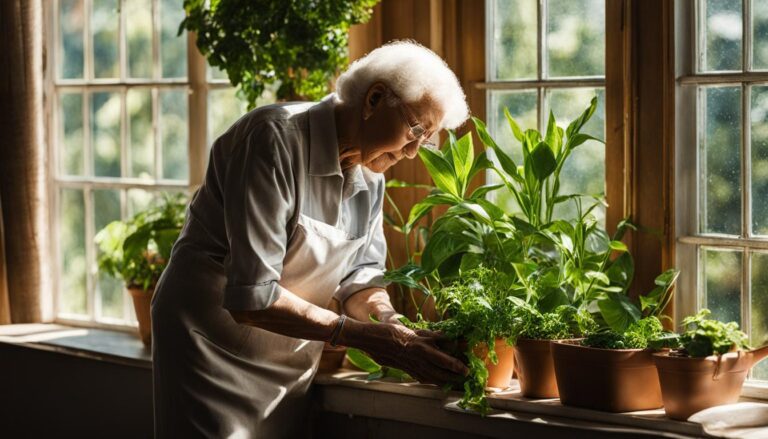
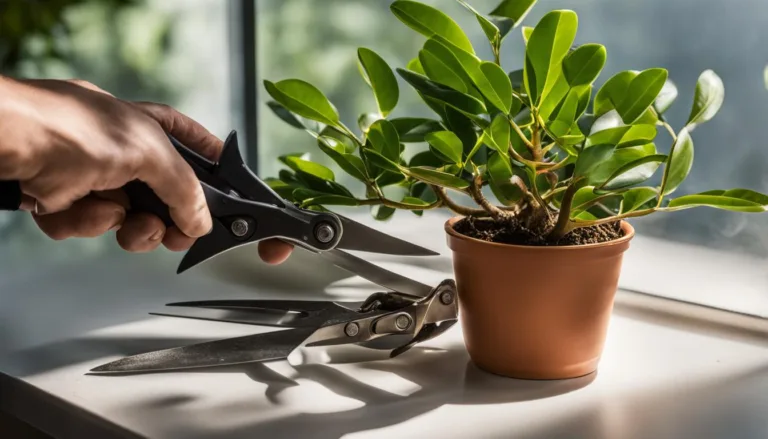
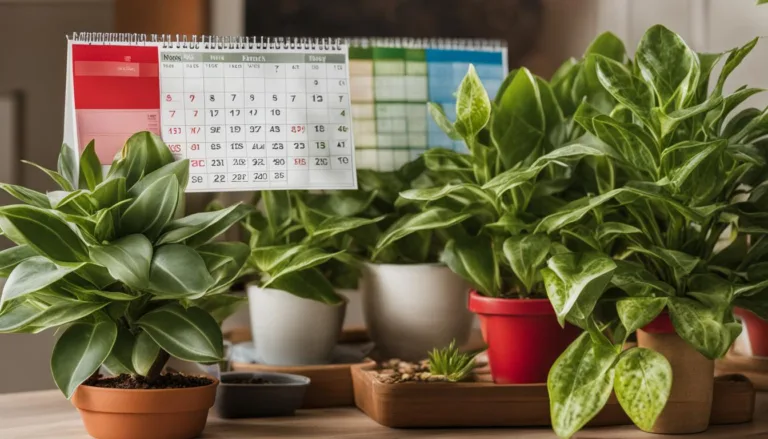
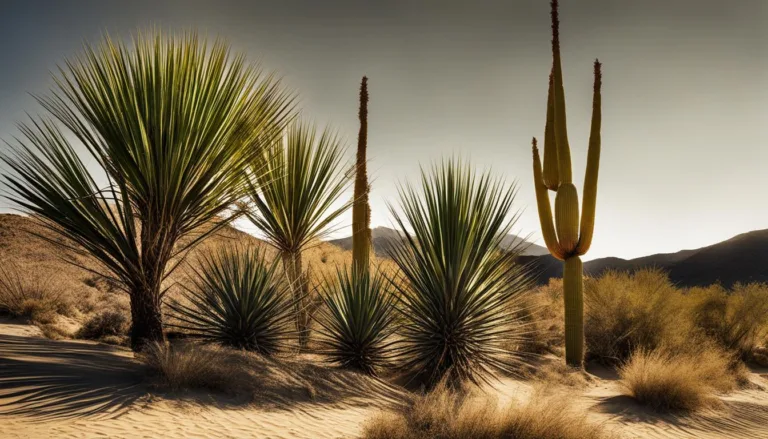
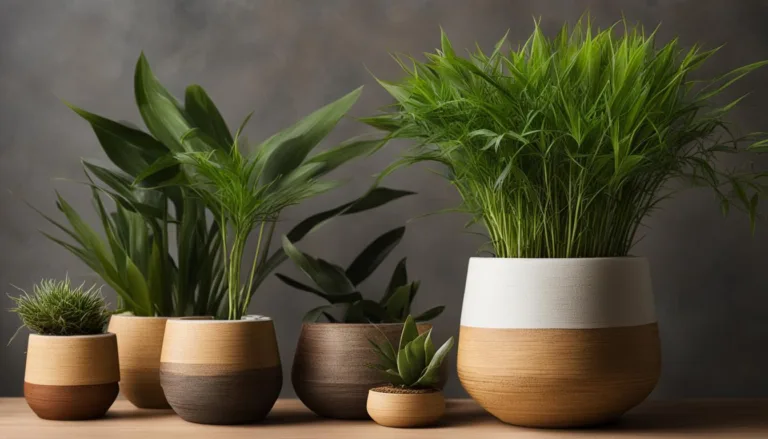
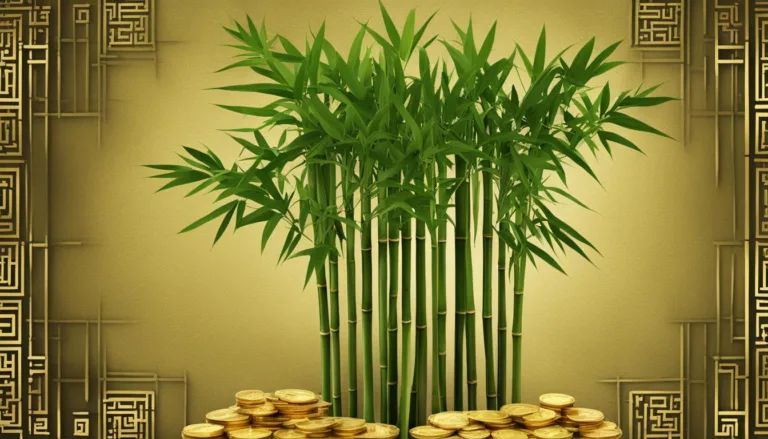
One Comment
Comments are closed.